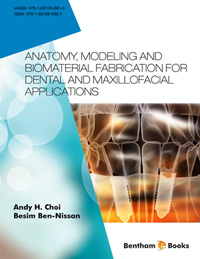Abstract
Implants have not always enjoyed a favorable reputation despite the fact that they have been used for many years to support dental prostheses. The function of a dental implant system is to restore dentition by providing a means of transmitting masticatory forces to the mandibular or maxillary bone. The importance of understanding the way in which the stresses and distortion acting in a dental implant and its surrounding bone structure are distributed is of paramount importance in the field of prosthetic replacement where the principal aim is to replace a damaged tooth so that the patient can function effectively. In response to occlusal forces as well as establishing normal dimensions of the peri-implant soft tissues, bone remodeling will take place during the first year of function. Changes in the internal state of stress in bone due to occlusal forces determine whether destructive or constructive bone remodeling will occur. The careful planning of functional occlusal loading can lead to a possible increase in bone-to-implant contact and maintain osseointegration. On the other hand, bone loss and/or component failure can be the result of insufficient load transfer or excessive loading.
Keywords: Bone remodeling, Dental Implants, Minimum success criteria, Osseointegration, Occlusal force, Stress shielding.






















